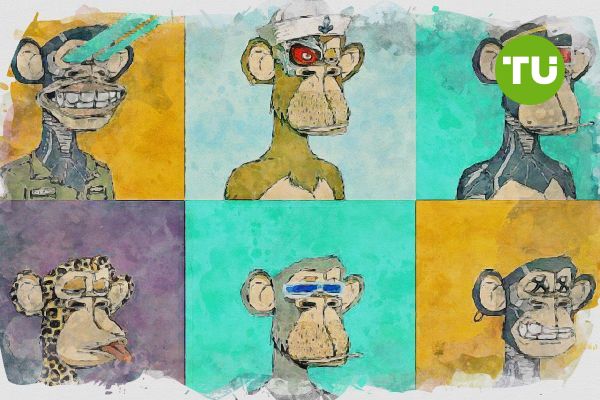The rise and fall of NFTs: Why the world cooled on non-fungible tokens
 NFTs are longer in vogue
NFTs are longer in vogue
NFTs reached their peak popularity in 2021 when the creators of the Bored Ape Yacht Club and CryptoPunks collections managed to earn millions. But over time, the hype around non-fungible tokens began to fade, and today, this segment of the crypto market interests very few people.
At the end of March, X2Y2, the third-largest NFT platform, announced its official shutdown. “After an incredible 3-year journey, I have important news: X2Y2 will shut down as an NFT marketplace on April 30, 2025. The contracts will remain active, but the platform itself will be closed,” the project creators stated on X (formerly Twitter). This marked yet another milestone in the decline of what was once a popular form of digital art.
What makes NFTs unique?
In the early 2020s, the world witnessed a rapid rise in the popularity of NFTs — unique digital certificates verified on the blockchain. They allowed creators to tokenize everything: from art and music to real estate and memes, offering a new form of ownership. This wasn’t physical ownership, but digital — giving creators the ability to sell their works while retaining copyrights. For artists, musicians, and meme creators, NFTs became a revolutionary tool, opening up new monetization opportunities in a world where piracy and illegal copying were rampant.
While the first NFT project — CryptoPunks — was launched by Larva Labs in 2017, it only gained traction during the COVID-19 pandemic in 2020–2021, when people started spending more time online.
Loading...
In 2021, a turning point came: digital artist Beeple sold the NFT artwork Everydays: The First 5000 Days at a Christie’s auction for a record $69 million. This figure caught global attention.
As a result, celebrities and major brands rushed to join the NFT movement. Musicians like Grimes and Kings of Leon released NFT albums, sports organizations created digital collectibles, and virtual fashion brands sold digital accessories. This trend accelerated especially after Yuga Labs launched the Bored Ape Yacht Club (BAYC) in April 2021 — a collection of 10,000 unique NFTs featuring cartoon apes with different traits.
Famous owners of these apes include pop and rap stars like Justin Bieber, Madonna, and Eminem, as well as NBA players like Stephen Curry. As a result, the NFT market grew to a staggering $17 billion in 2021.
Trouble in paradise
However, the NFT boom was short-lived. For many, NFTs were merely a speculative way to make quick money. A trend emerged of “flipping” — buying NFTs with the intention to sell them quickly for a profit. This flooded the market with assets lacking intrinsic value. The speculation drove artificial price hikes as people rushed to buy NFTs, hoping to sell them later at a higher price.
Like the dot-com bubble of the 2000s, the NFT market was inflated by speculation and hype. Many buyers expected fast profits, which led to unstable price growth and a lack of real value. At the same time, numerous projects failed to offer genuine utility, limiting their practical use and contributing to market stagnation. Doubts emerged about the long-term viability of NFTs. Critics began highlighting the negative environmental impact of blockchain tech — particularly Ethereum’s energy consumption. Public figures like Elon Musk and Jack Dorsey also voiced skepticism about the long-term value of NFTs, adding to the growing uncertainty.
Loading...
As a result, collections like CryptoPunks and Bored Ape Yacht Club began to drop in value, and their owners suffered substantial losses. For example, Justin Bieber purchased Bored Ape #3001 in January 2022 for 500 ETH (about $1.3 million at the time). By November 2022, its value had dropped to around $69,000, representing a 95% loss from the original price. By mid-2023, it had fallen further to $40,000–$60,000.
Is there still hope for NFTs?
Despite the sharp decline in interest and value, NFTs haven't disappeared — they've begun to transform. NFTs are finding new use cases in areas like gaming, real estate, and metaverses. Virtual worlds are working to integrate NFTs as a way to represent ownership of in-game assets, real estate, and even identity.
Loading...
Additionally, the rise of AI and Web3 technologies could offer new use cases for NFTs beyond art and collectibles.
Furthermore, the underlying blockchain technology remains a powerful tool for transforming industries such as supply chain management, intellectual property, and decentralized finance (DeFi). As more sustainable and scalable blockchain solutions emerge, blockchain could play a key role in the future of digital ownership and authenticity.













































































































































